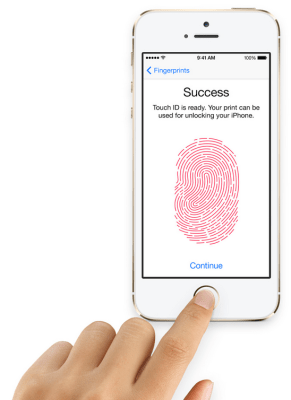A new patent application published by the USPTO (via MacRumors) shows some more detail around Apple’s use of Touch ID and the fingerprint sensor in the iPhone 5s. Apple has been mostly quiet about the specifics of how the tech works, while generally asserting that the fingerprint information never goes to a server, and only remains on the phone itself in a “secure enclave” which isn’t accessible by the rest of the system or third-party devs.
The patent describes a system that not only siloes data on the Touch ID “enclave” section of the A7 processor, but that also encrypts the fingerprint maps registered on the device to make it that much more difficult for any thieves to even attempt to pull the data off in any kind of usable form. The enclave is a one-way street, too: the system can check new fingerprints against the stored ones, but there’s no way to check or call up the stored fingerprints at all for external examination once they’re registered.
Otherwise, the system works likely as you’d expect it to, checking against stored profiles for possible matches (and using stored lower resolution templates based on variables like different angles to make it more likely to correctly ID your finger). But another patent also published this week shows a breakdown of all the components within the Touch ID hardware, and explains how the actual sensor hardware can be hidden behind an opaque lens that’s been printed with an “ink assembly.” It’s likely this needs to be uniform to read correctly, however, as Apple notably left off its small rounded square icon on the 5s home button, after that has graced each since the iPhone’s initial introduction.
These patents provide a little more clarity on what exactly is going on when you rest your finger or thumb on that 5s home screen and have it magically unlock, and it’s reassuring to see just how much thought Apple has put into making sure the info truly is secure.
